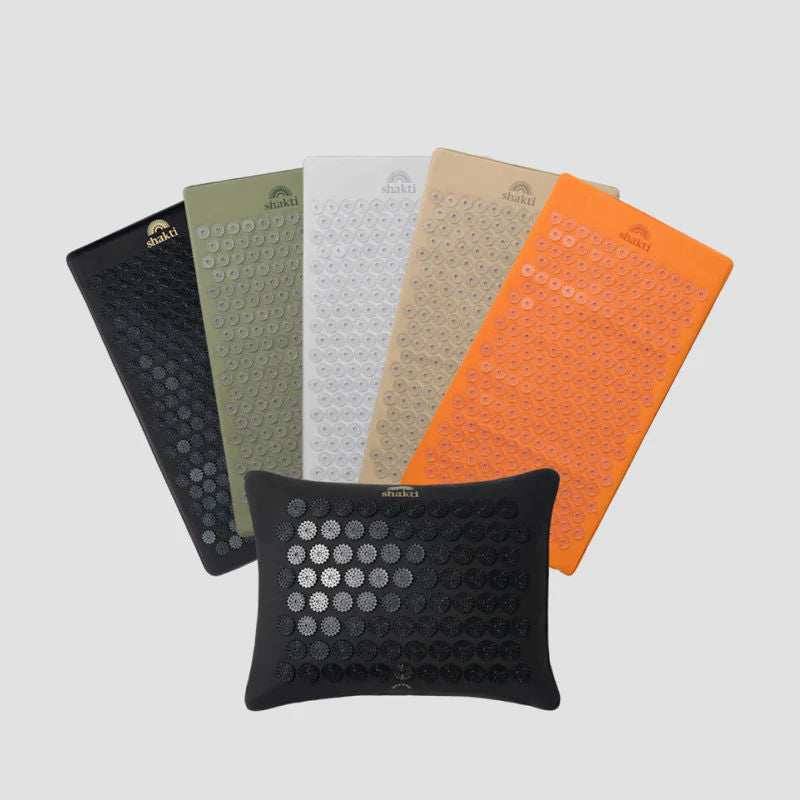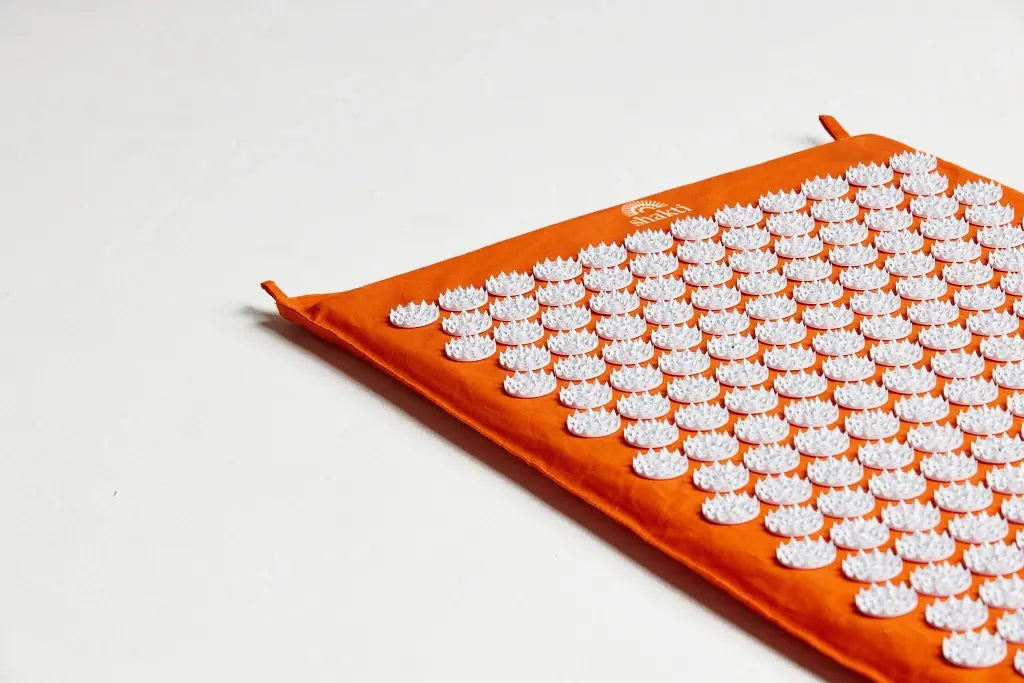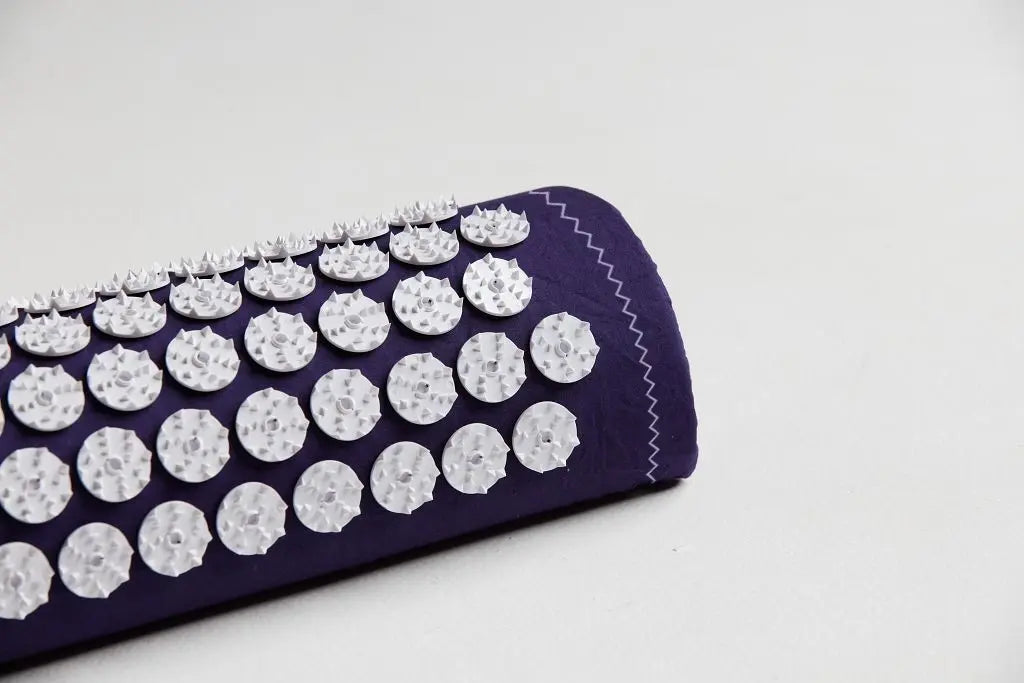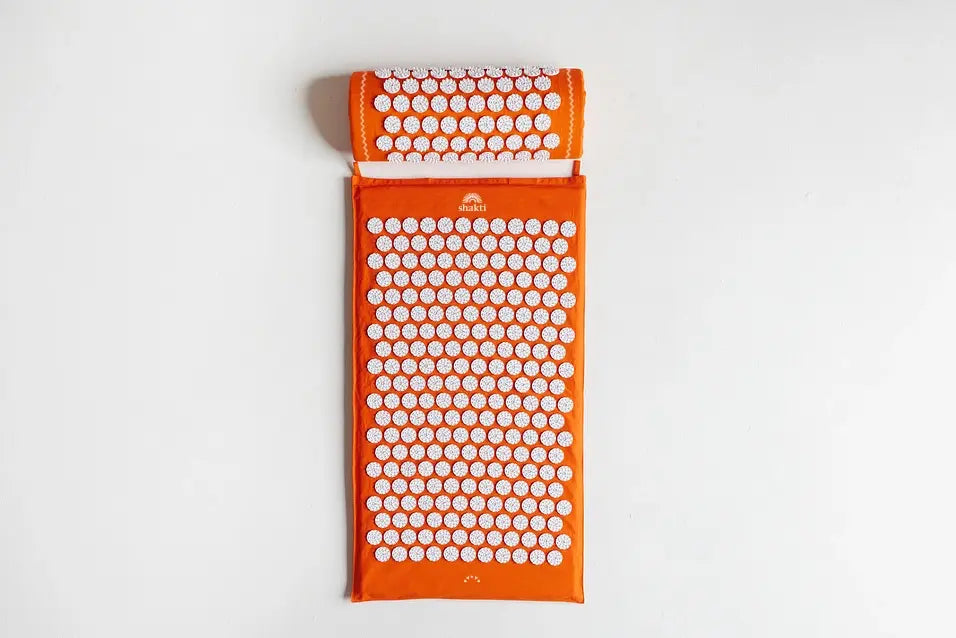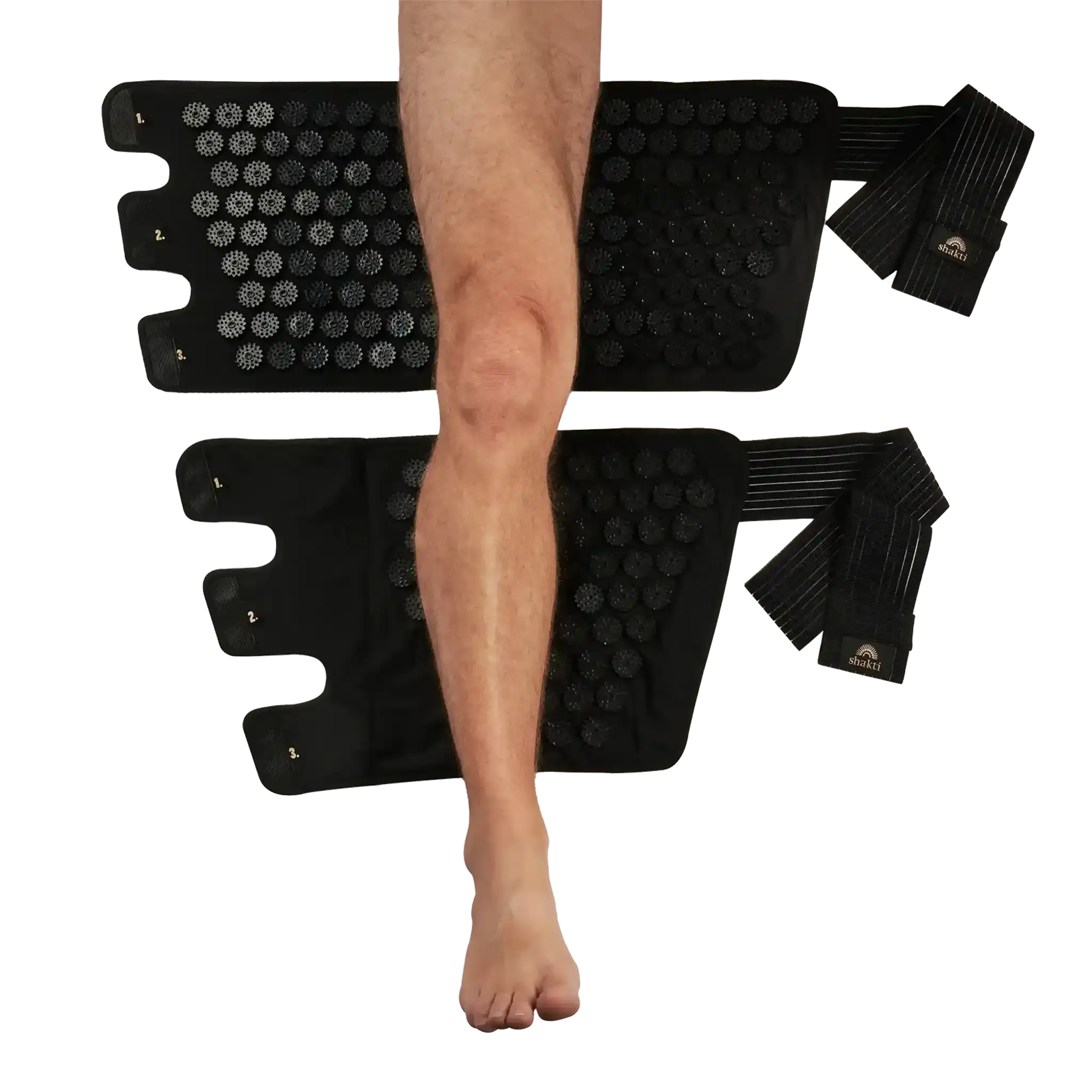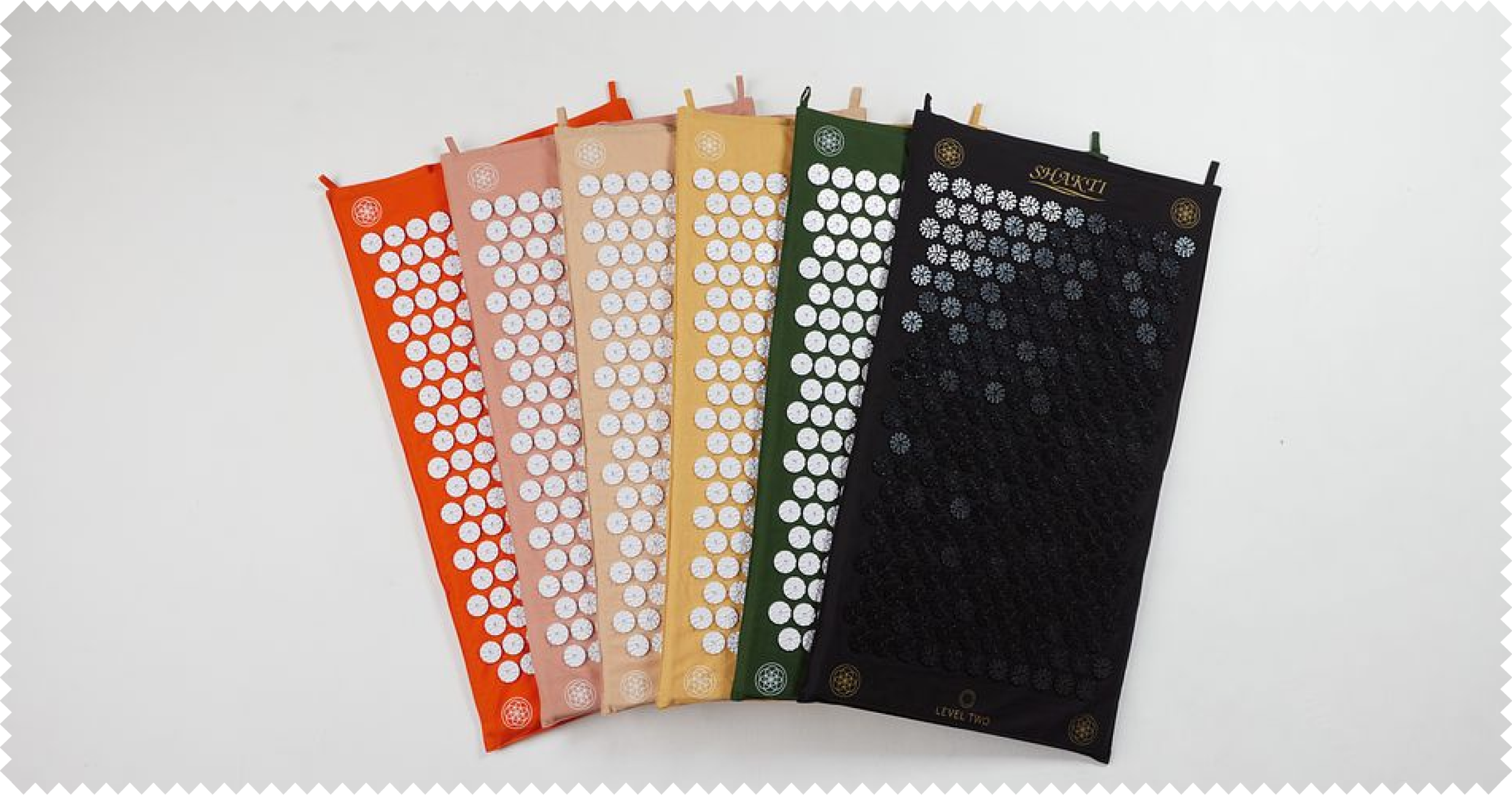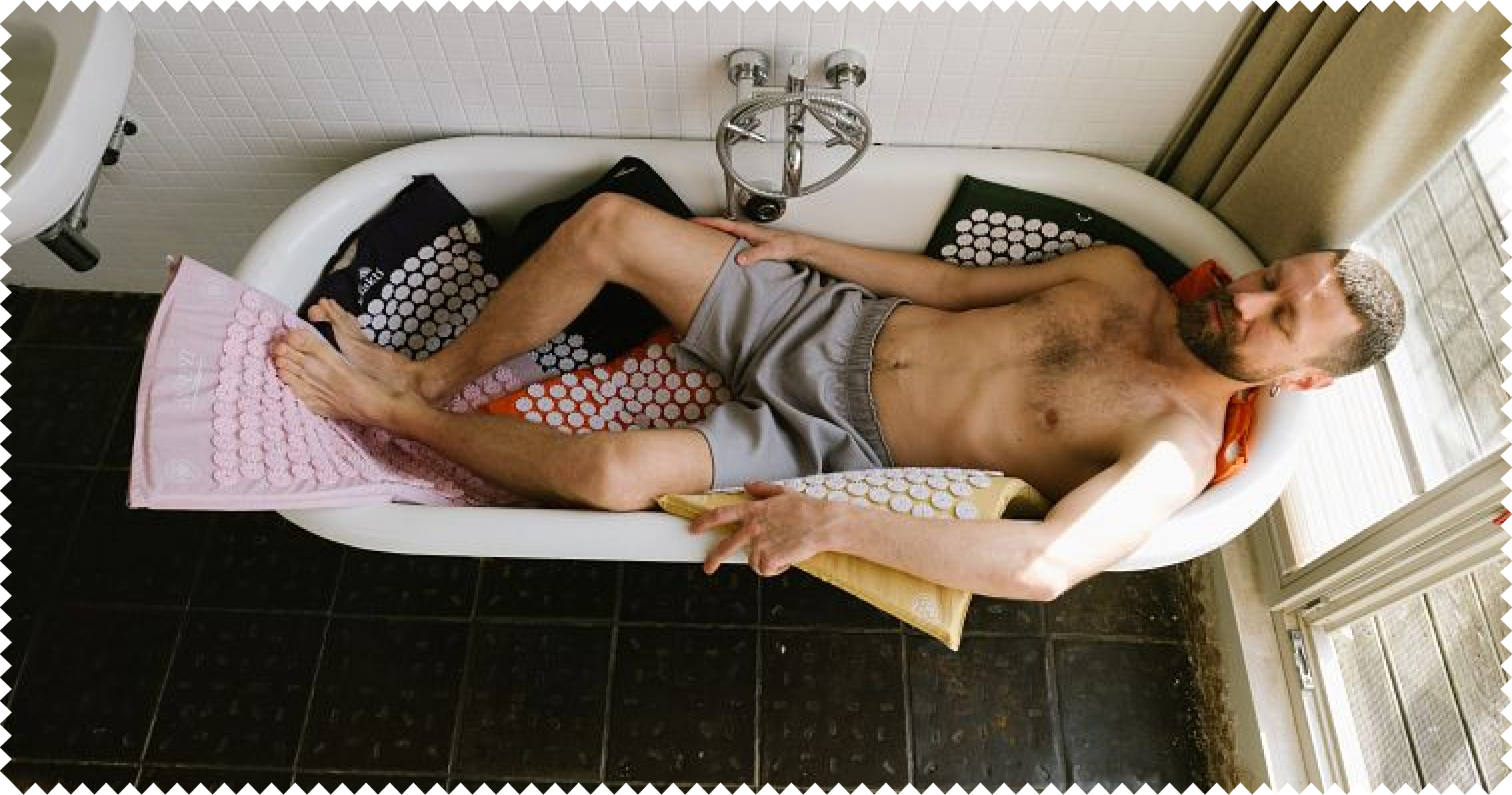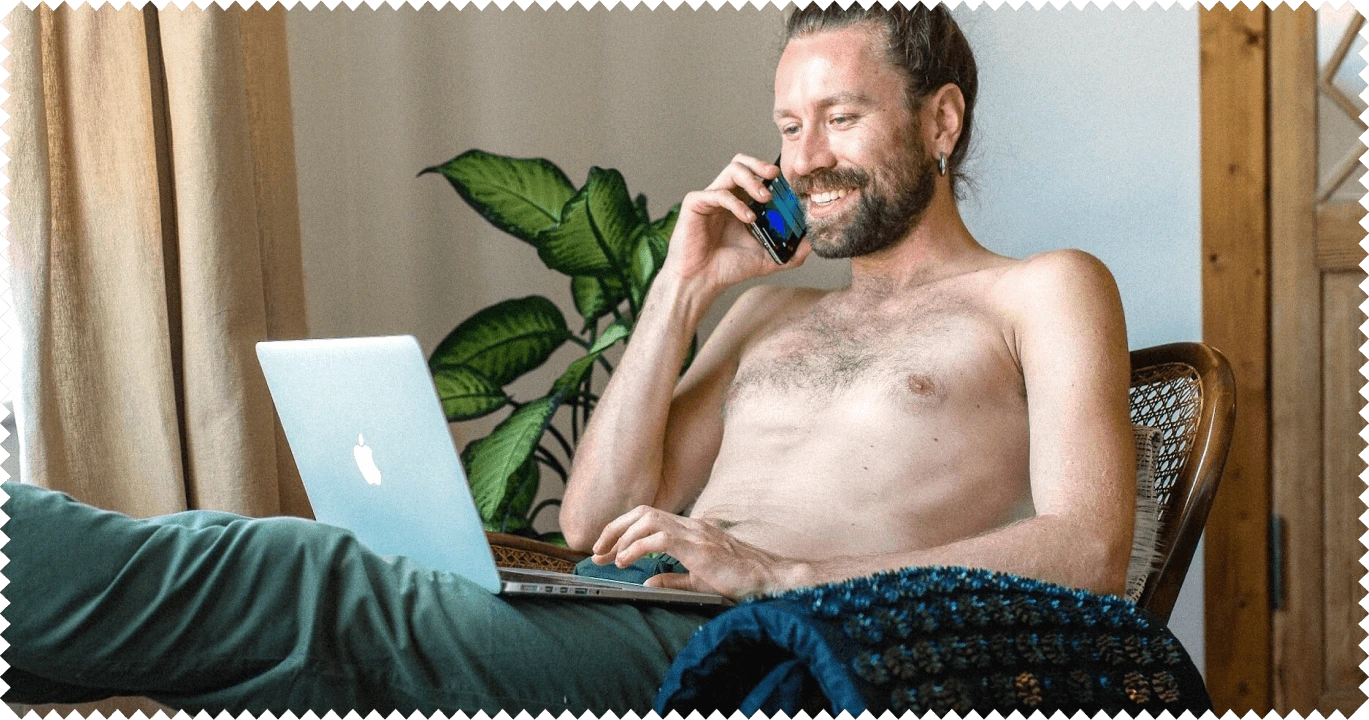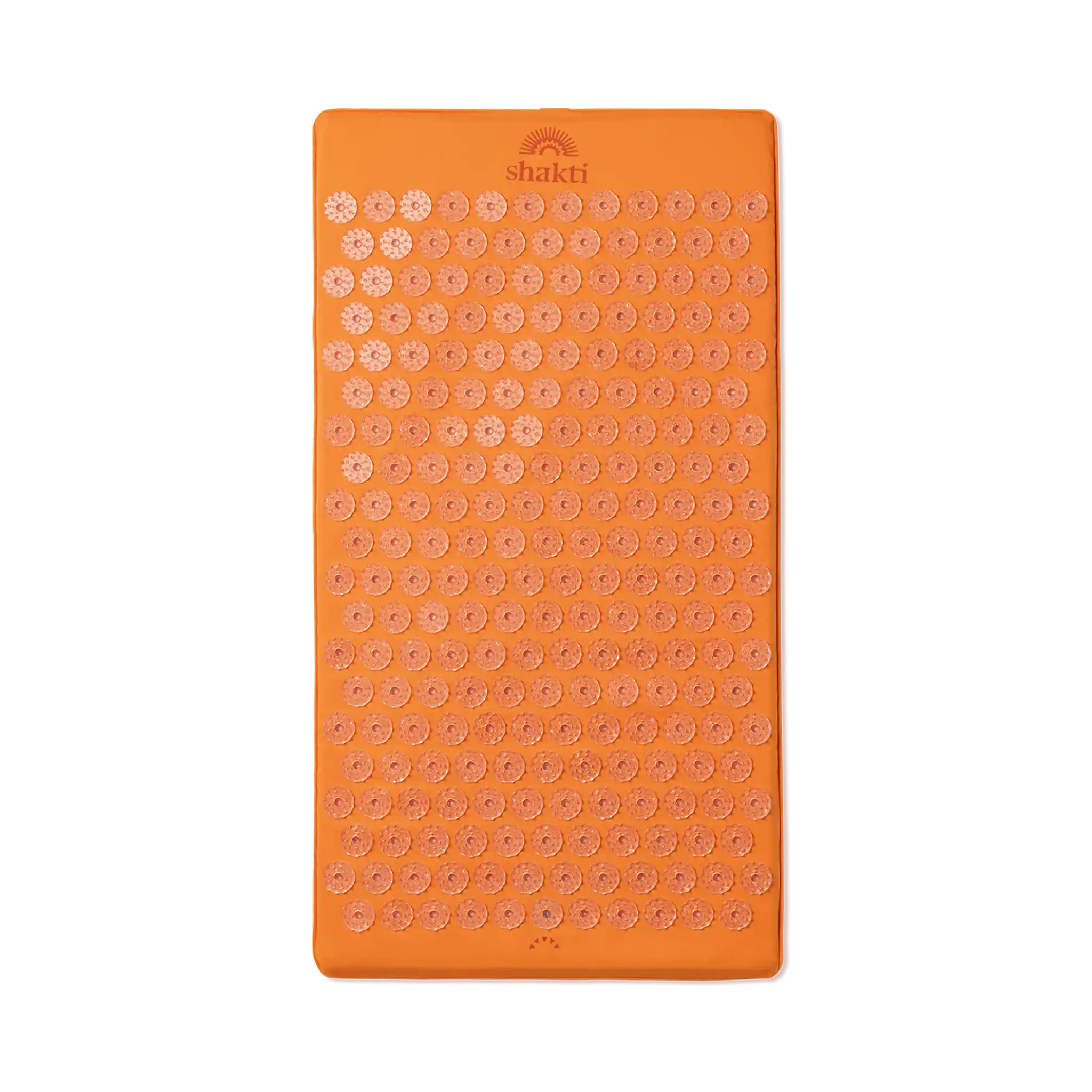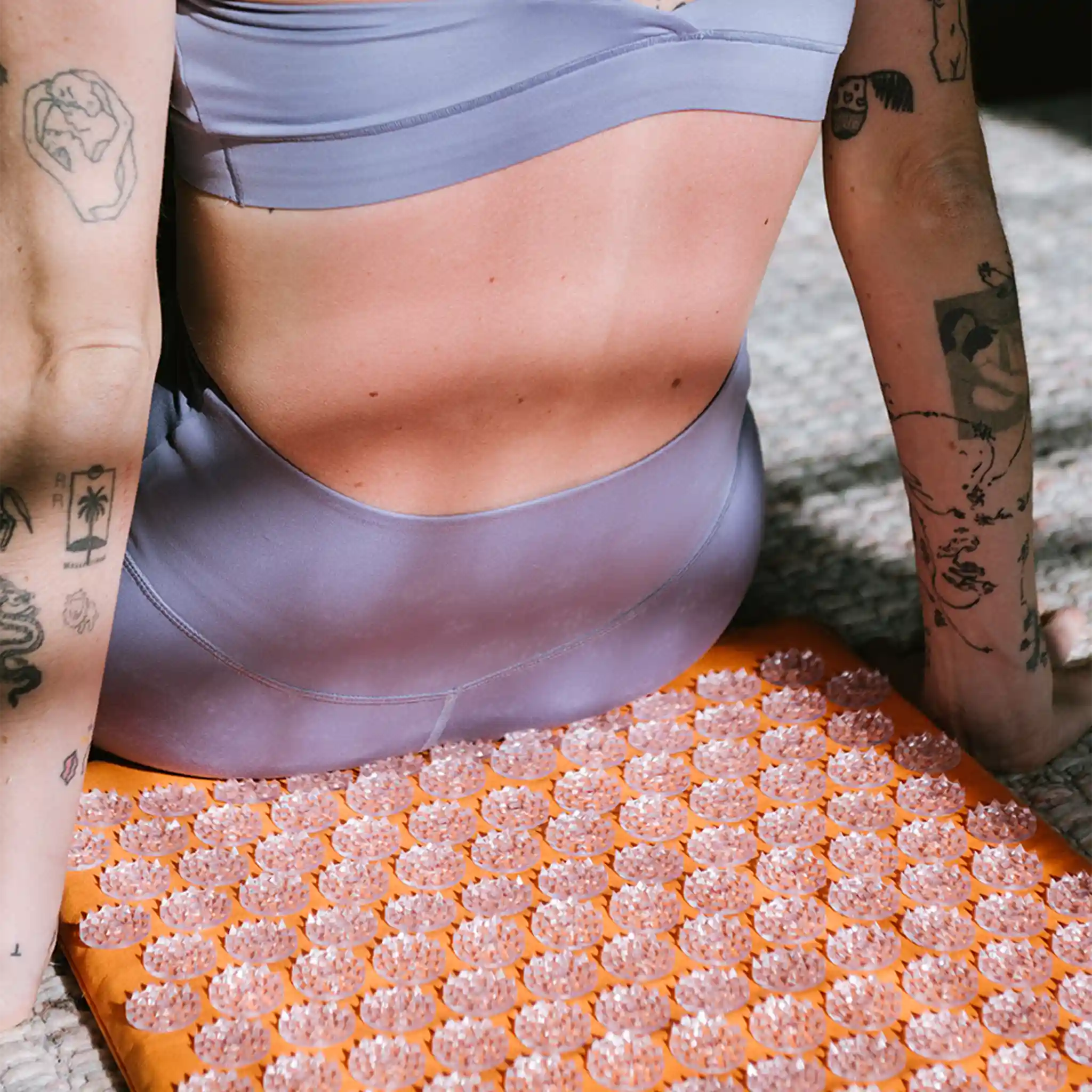It is widely known that acupressure has a direct influence on the mobility of our body and that hardenings can be loosened by this treatment. But what actually happens on the biochemical level of the body that is invisible to our eyes?
Content
1. acupressure for hormones such as endorphins and oxytocin: little helpers, big effect
2 What is oxytocin and how does it work in the body?
3. what are endorphins and how do they work in the body?
4. acupressure for endorphins and oxytocin - 3 exercises to support the body in hormone regulation
Acupressure for hormones like endorphins and oxytocin: small helpers, big effect
Out of sight out of mind is definitely not a good way to deal with your outer shell. It is therefore worth developing a better understanding of those processes that are so tiny that you only notice them when they suddenly stop working and have noticeable consequences.
Today we want to give you a little insight into this complex system with the topic of acupressure for endorphins and oxytocin. We will also introduce you to some exercises that you can use to positively influence the release of hormones in your body.
What is oxytocin and how does it work in the body?
Oxytocin is a hormone that is often popularly referred to as the "cuddle hormone". This term led to oxytocin experiencing a veritable hype as a drug in the early 2000s, which only came to an end when oxytocin nasal sprays were banned from sale in 2007. The assumption that the "cuddle hormone" can be used as a love or harmony potion for everyone may be tempting, but it is simply wrong and is based on a lack of education on the subject.
Why oxytocin is nevertheless so incredibly important and is produced in sufficient quantities by a healthy body itself, we will now tell you:
The hormone is produced in your diencephalon and has some pretty exciting tasks to fulfill there. As a so-called neurotransmitter, it is responsible for transmitting signals between individual cells. You can imagine that oxytocin monitors orders like an overseer and actively controls exactly what the cells under its control have to do.
In its function as a hormone, oxytocin acts as a messenger like the body's own letter carrier and transmits certain information that is then acted upon. For example, "Hey body - provide lots of resources to speed up wound healing" or "Listen up everyone: Blood pressure will be lowered from now on!" A real marvel.
The term oxytocin originated from the Greek word ōkys tokos and originally meant "quick birth". The reason for this name is quite simple: oxytocin is largely responsible for the mother-child bond. It triggers contractions and afterbirth, helps to stimulate the mother's milk production and is produced in the baby after it has fed at the breast.
But the hormone doesn't just have its fingers in the pie for mothers. What is important for birth also plays a major role in other areas of the body:
Oxytocin promotes wound healing and thus gives the weakened body a major boost towards health. It also reduces blood pressure and has a sedative effect. You even notice this in everyday life if you pay close attention to your body's signals. After sexual intercourse, especially after an orgasm, or even when simply cuddling up on the couch with someone you know, for example, you become tired. This is due to the fact that oxytocin makes you sleepy and calm.
Perhaps you are now wondering whether the hormone is only released in women, since men do not bear children. We tell you quite clearly, no. Men also secrete the hormone because, for example, it ensures the functioning secretion of the prostate and regulates how much sodium the kidney absorbs.
So far, we have mainly talked about the effects that are released when we are together or in relation to childbirth. This naturally begs the question: are people who are not in a relationship and who have little physical contact exempt from these important effects? Of course not! The hormone also flows from the diencephalon into the body and lowers cortisol levels (cortisol is a stress hormone) when we sing, receive a massage or feel the warming rays of the sun on our skin.
This effect makes us feel significantly less stressed within a short period of time and increases our moments of well-being. This is also the reason why, in cold regions, you can often see so many people standing in a small strip of sunlight and turning their faces towards the sun with their eyes closed.
Well, with all the wonderful effects we've heard about so far, the term "cuddle hormone" is actually totally apt, isn't it? There is one catch, however, which is all too often overlooked when raving about the hormone: the positive bonding effects that oxytocin triggers lead to a strong need in some people to protect their own group with which they feel connected from everything that is alien to the group. This can lead to aggression and an exaggerated protective instinct.
Due to this effect of the hormone, the increased feeling of closeness and trust in some people is also accompanied by a closed attitude towards new and unfamiliar things. Change is suddenly perceived as a threat and affected people tend to perceive and evaluate disappointments much more intensely. An overdose of exogenous oxytocin can trigger or greatly intensify these negative effects.
That is why it is always important to talk to a doctor about the subject instead of experimenting with medication from the internet on your own. If you long for positive feelings and a pain-free body, you should definitely familiarize yourself with other little helpers that can be influenced by acupressure: Endorphins.
What are endorphins and how do they work in the body?
These hormones, which almost everyone has heard of, are often casually categorized as "happiness hormones". But what exactly does that mean? Do they really make us happy? And above all, why are they so important for our health?
Endorphins are opioids (or morphines) in our hormone system. Wait, opioids - doesn't that include heroin? Well, you're right, but that's not the point here. Instead of adding something from the outside, let's look at what our inner factories can produce themselves. Endorphins, or "endogenous morphines", are morphine produced by the body itself.
Their job is to regulate pain and hunger and also to control the production of sex hormones. You can imagine it in the body like this: Endorphins rush in when your body is in pain or damaged. They ensure that the pain doesn't get out of hand and, in extreme cases, can even prevent you from feeling any pain at all thanks to their direct connection to the spinal cord and your brain. To achieve this, they use their ability to stimulate the body to release more dopamine. This can literally save your life and allow you to function in situations that would often be considered impossible in retrospect. For example, if you have been seriously injured and still have to move away from a source of danger.
Of course, endorphins not only take care of your healthy physical functioning in extreme situations, but also in everyday life. They help you to regulate your digestion and body temperature, control your breathing and ensure that your immune system responds appropriately to intruders. When our endorphins are hard at work, we hardly notice them in everyday life. It is only when their production is disrupted or their effect is blocked by other processes in the body that we suddenly become painfully aware of their loss.
What happens when the endorphins no longer do their job properly?
This has the same effect on our bodies as if a kindergarten teacher suddenly left her 5-year-old protégés alone for a few hours: there is not necessarily a danger to life, but the results can still be devastating.
Going to the toilet no longer works properly - digestion falters. Strife in the form of autoimmune reactions breaks out. Stress spreads, breathing becomes shallower and in the confusion we become more susceptible to illness. In stressful situations, all those systems suddenly go crazy that our endorphins are normally involved in regulating.
As the release of hormones can be strongly stimulated by injuries, pain and UV light, it makes sense to start here for your own health. Regular daylight and sunlight (no sunburn!) remind the body that the hormone is needed. Stimulating the sensation of pain and pressure with an acupressure mat or a barefoot walk over uneven terrain, for example, also triggers the release of endorphins.
But is that all? No, the happiness makers can do even more!
Another exciting thing about endorphins is the so-called placebo effect. The body releases the helpful hormones in anticipation of a healing effect. In this way, it is possible for the famous "improvement by conviction" to occur, which is often ridiculed. However, if you take a closer look at the idea, it quickly becomes clear that what is happening here is not at all ridiculous. The mere expectation of an improvement helps us to get better faster - a lever that we should use.
Below we have put together some exercises that you can use to boost your body's endorphin production. Again, if you have any questions or uncertainties, for example about depression or pregnancy, you should first speak to your doctor. If you are healthy and fit, you can get started straight away and get on the mat with positive expectations. Because what have we just learned? Exactly: if you make a firm commitment to getting healthy, you are already on the right path biochemically with the first step.
Acupressure for endorphins and oxytocin - 3 exercises to help the body regulate hormones.
Acupressure is a wonderful tool to stimulate the body's natural endorphin production. Acupressure with the hand or an acupressure mat relieves tension and encourages the body to restore its healthy balance. So having pain to heal pain?
Basically, you can think of it a bit like a pile of disorganized papers in your home. It's lying around in the way, taking up space and it would be nicer if it wasn't there, but it doesn't prevent you from getting on with your life. You often don't even see the pile in everyday life, only when you're stressed do you think: "And then there's this mess!" However, when a gust of wind comes and knocks the pile over and scatters it all over the room, you are forced to tidy it up. As soon as it's gone, the room suddenly feels better, tidier and freer.
This is exactly what acupressure does to your body. Often we don't even see a physical problem in everyday life and function around it, so to speak. But that does not mean that the problem is not there. Through the stimulation of acupressure we can help ourselves to solve deep-seated problems and actively contribute to the healthy functioning of our whole system.
Even simply lying or standing on the Shakti Mat has a positive effect on the regulation of hormone levels in many people. However, we have again prepared some very specific exercises for all those who are curious and want more.
Exercise 1: Good morning, endorphins!
Physical activity, just like pain stimuli, helps the body to release endorphins. That's why in this exercise we've put together a sequence of movements that is particularly suitable for starting the day in the morning:
Place both feet on the Shakti Mat. If the pressure is too strong for you, put on socks or use a thin cloth to reduce the intensity of the touch. Here we go!
Swing your upper body alternately to the left and right 15 times. Your arms swing loosely outwards, all your muscles are relaxed and your knees are soft and not bent.
Now bend down towards your feet once and then stretch upwards as far as you can. Now step off the mat and circle first your left foot and then your right foot a few times.
Exercise 2: Di4 meets joint movement
The following exercise is particularly effective for pain that can be clearly located in one place. Look for the acupressure point Di4 on your left hand. The point is located in the soft tissue between the bones of the hand leading to the thumb and index finger. If you press against the point simultaneously from above (thumb of your right hand) and below (index or middle finger of your right hand), you should notice that the spot hurts.
Now hold this painful point firmly for one to two minutes and gently move the joint closest to the pain back and forth. For pain in the neck, for example, this would be the head. For pain in the shoulder muscles, it would be the shoulder joint and so on.
Exercise 3: From the belly
We have already discussed above that, in addition to all its positive effects, oxytocin can cause us to withdraw into ourselves. This often results in an inward-looking posture (slumped shoulders, slumped body center). We can counteract this effect by lying with our stomach on the acupressure mat.
The pressure on the points in the abdominal area can feel strange at first because we are not used to being touched so intensely in this area. If the mat feels uncomfortable on bare skin, it is possible to put on a thin T-shirt or place a cloth between your body and the mat. The exercise is best performed on a soft surface, such as your bed or a thick blanket.
Even after a short time in the prone position, many people experience a tingling feeling. This is related to the blood circulation, which is stimulated and ensures that the body's own information chain, which also includes our hormones, is set in motion. Your body police, so to speak, takes a closer look at the abdominal area and notes everything that is tense here and where help is needed.
This can lead to immediate reactions such as a growling sensation in your stomach or the passing of bowel movements - which, by the way, is just medical jargon for a simple fart. It can also happen that you suddenly have to go to the toilet.
If this is the case: great, follow it up and don't ignore it. Your body will start to get your gastrointestinal tract back on track.
The exercise relaxes your abdominal tissue and ensures that tensions that regularly get stuck here are finally released, especially in the area around the navel. Then there is once again room for anticipation, love, happiness, hunger for a treat and all the other wonderful things that should be tingling in your belly instead of pain and tension.
If you would like to discuss the topics of acupressure and acupressure mats or ask questions, join our Facebook group.
Sources
- Andrews, Synthia and Dempsey, Bobbi: Acupressure & Reflexology for Dummies. Wiley Publishing, Indianapolis 2007. p. 108 f., 313.
- Reed Gach, Michael: Healing Points. Acupressure for the self-treatment of diseases. Knaur, Munich 1992. p 309 ff.
- Dr. Kenyon, Julian: Acupressure Techniques. A self-help guide. Thorsons, London 1987. p 16 f.
- Schwind, Peter: Fascia. Tissue of life. 2nd edition, Irisiana, Munich 2015 p. 180 f.
- ZDF: The dark side of oxytocin. Lesch to go. 2016
- ZDF: Interaction between psyche and hormones. Scobel. 2018
- https://www.zdf.de/wissen/leschs-kosmos/heilkraft-der-wunder-selbstheilung-harald-lesch-leschs-100.html (Einsichtnahme 28.01.2019)
- https://www.doktorweigl.de/allgemein/das-schmerzgedaechtnis-entstehung-und-durch-multimodale-therapie-loeschen-6133/ (Einsichtnahme 28.01.2019)


